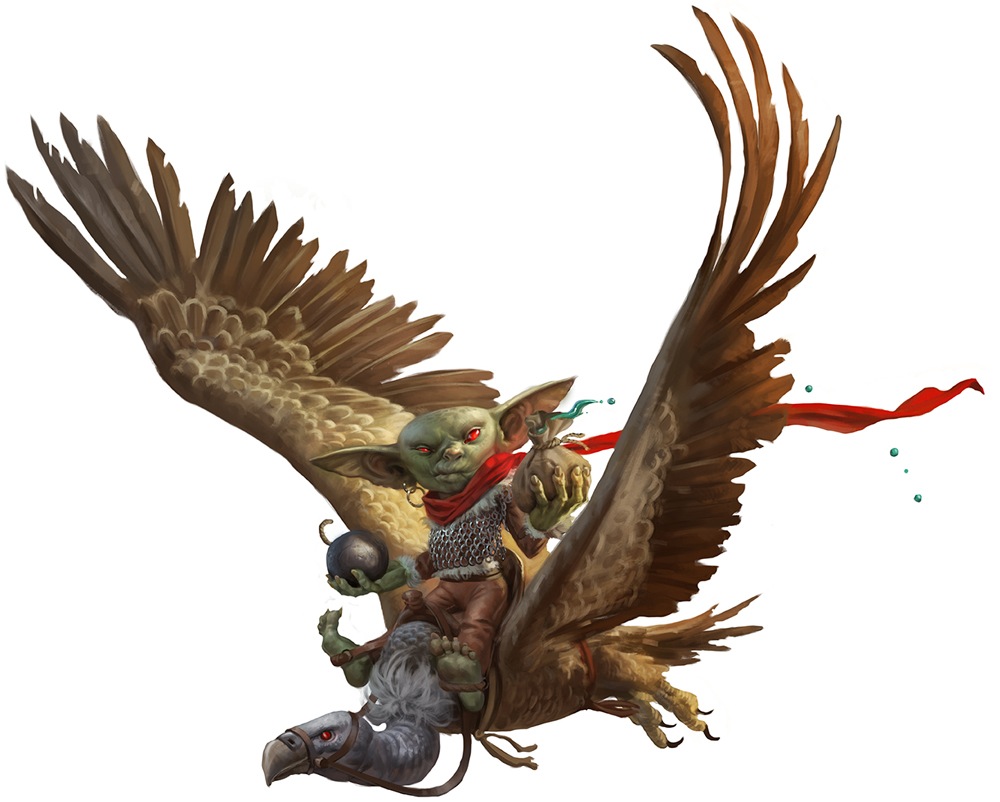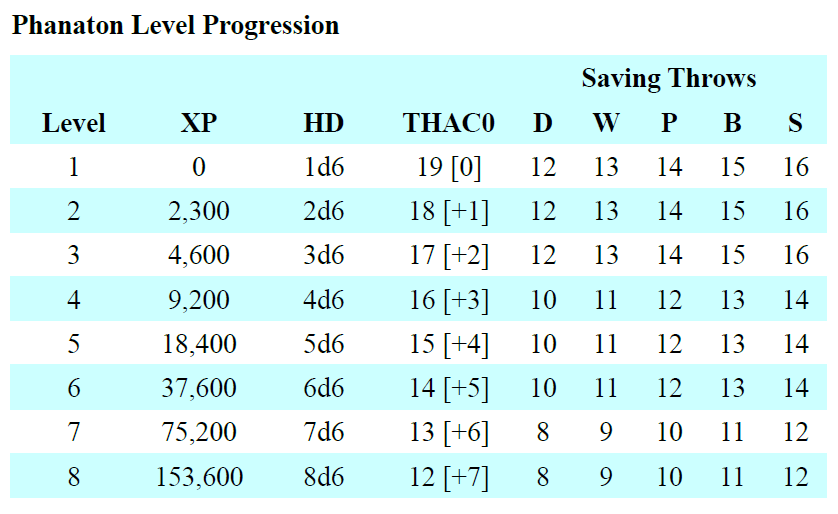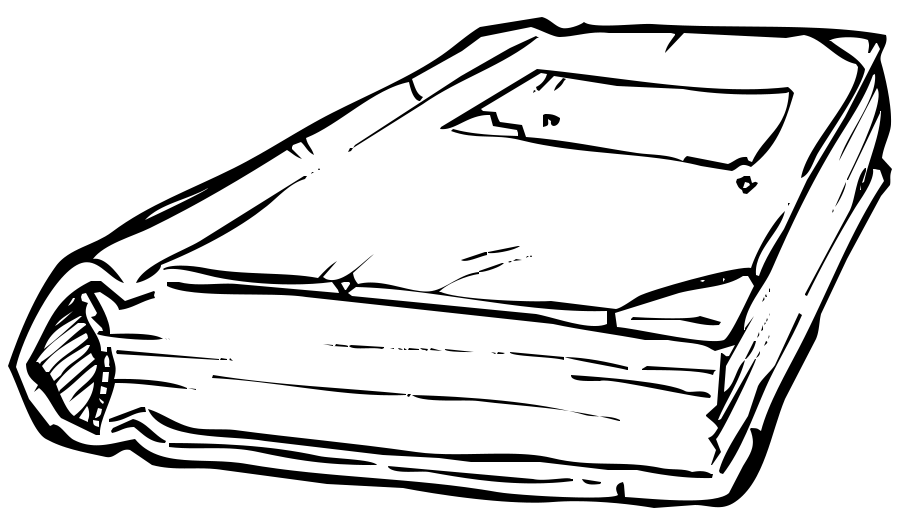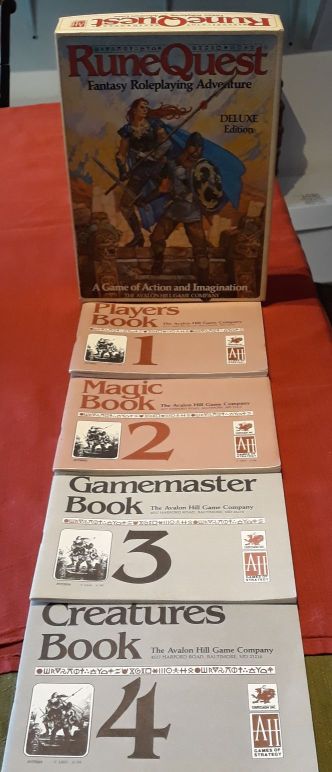Among the gems of my game collection is the third edition of RuneQuest, a Chaosium Game published by The Avalon Hill Game Company. The boxed set astonishes with its detailed character creation and its overview of a wonderful, pseudo-historical campaign setting. Magic fills the world, and most RuneQuest characters have some ability to use magic. For example, the sample character Cormac, a Pictish hunter from a culture little above the Stone Age in terms of tools, has two spell-points and knows three spells.
RuneQuest takes seriously the ancient idea that malevolent spirits cause at least some ailments, both physical and mental. These spirits as described in the Creatures Book sound much like the medieval Scholastics’ descriptions of intellectual beings such as angels. In a RuneQuest world, a character suffering from brain fever may be possessed by a disease spirit. Another character with chronic pain may have fallen victim to a passion spirit.
The RuneQuest magic system includes spells that summon, command, bind, and dispel spirits. Some spirits can be captured and used as tools. Others may impart knowledge to those who can subdue them. It’s a robust system that shaman, priests, and sorcerers may exploit to grow in power and skill, but not without risk. Successful dealings with spirits are seldom sure things, and failure often results in spirit possession.
For purposes of this post, I want to give the B/X D&D treatment to two spirit types: disease and passion. These spirits are always malevolent.
Common Spirit Traits
Spirits are not undead. Clerics have no special ability to turn spirits.
Spirits are naturally invisible and incorporeal. When a spirit attacks, it manifests a visible, but still incorporeal form. This form’s appearance varies from spirit to spirit, but it is always grotesque and obviously malevolent. If a manifested spirit does not attack for a round, it becomes invisible again.
Only magical weapons or spells can damage a spirit. Spirits are immune to sleep, charm, and hold spells.
Spirits fly at a speed 240′ (80′), and mundane barriers pose no obstacle to them. A spirit can fly through doors, walls, et cetera, as easily as it flies through the air.
Spirits only make noise when they want to or when they attack. Spirits seldom communicate in any known language. They surprise others on a roll of 1-5 (on 1d6).
Disease or Passion Spirit (Spirit, Chaotic)
Armor Class: 8
Hit Dice: 1-4** (S or M)
Move: Fly 240′ (80′)
Attacks: 1 possession attack
Damage: Special
No. Appearing: 1 (1)
Save As: Fighter 1-4
Morale: 10
A spirit attacks an intelligent, living creature within 10 feet per HD the spirit has. The target must make a saving throw against death with a penalty equal to the spirit’s HD. Success means the target is immune to that spirit’s possession attack. If the target fails the saving throw, it takes 2 points of damage per HD the spirit has. If this damage reduces the target to 0 or fewer hit points, the target falls unconscious and becomes possessed by the spirit. The target regains consciousness in 1-4 turns with as many hit points remaining as it had before the spirit’s attack. The effects of possession depend on the type of spirit.
A disease spirit infects its host with a horrible malady:
Wasting Sickness: The victim loses 1 point of Strength per day. If the victim’s Strength is reduced to less than 3, the victim becomes comatose. If the victim’s Strength reaches 0, the victim dies.
Creeping Chills: The victim loses 1 point of Constitution per day. If the victim’s Constitution is reduced to less than 3, the victim becomes comatose. If the victim’s Constitution reaches 0, the victim dies.
Brain Fever: The victim loses 1 point of Intelligence per day. If the victim’s Intelligence is reduced to less than 3, the victim becomes comatose. If the victim’s Intelligence reaches 0, the victim dies.
Soul Waste: The victim loses 1 point of Wisdom per day. If the victim’s Wisdom is reduced to less than 3, the victim becomes comatose. If the victim’s Wisdom reaches 0, the victim dies.
Shakes: The victim loses 1 point of Dexterity per day. If the victim’s Dexterity is reduced to less than 3, the victim becomes comatose. If the victim’s Dexterity reaches 0, the victim dies.
Lost ability score points recover at the same rate, but only after the victim has been freed from spirit possession.
A passion spirit damages the host’s mind:
Fear: The victim grows fearful, suffering a -2 “to hit” penalty on all attack rolls. When faced with numerically superior opposition or an unnatural foe, the victim must make a saving throw versus spells or be affected by cause fear (the reverse of remove fear). The victim automatically fails saving throws against other fear-based effects.
Madness: In any stressful situation (e.g., combat), or at least once per day regardless, the victim must make a saving throw versus spells. Failure reduces the victim to incoherence. The victim can do nothing else except scream, giggle, lapse into catatonia, et cetera, for 1-20 hours.
Pain: The victim suffers from chronic, debilitating pain, incurring a -1 “to hit” penalty on all attack rolls and on saving throws against effects that cause damage. Damage from any source forces the victim to make a saving throw versus paralysis to avoid being rendered incapable of actions other than writhing in agony, whimpering, et cetera, for 2-5 rounds.
A remove curse cast by a Lawful cleric forces the spirit to make a saving throw versus spells with a -2 penalty. Failure forces the spirit out of the host, banishing the spirit from the material realm. Remove curse cast by others might have the same effect, but the spirit makes its saving throw with no penalty.
Tags: B/X D&D, RuneQuest






